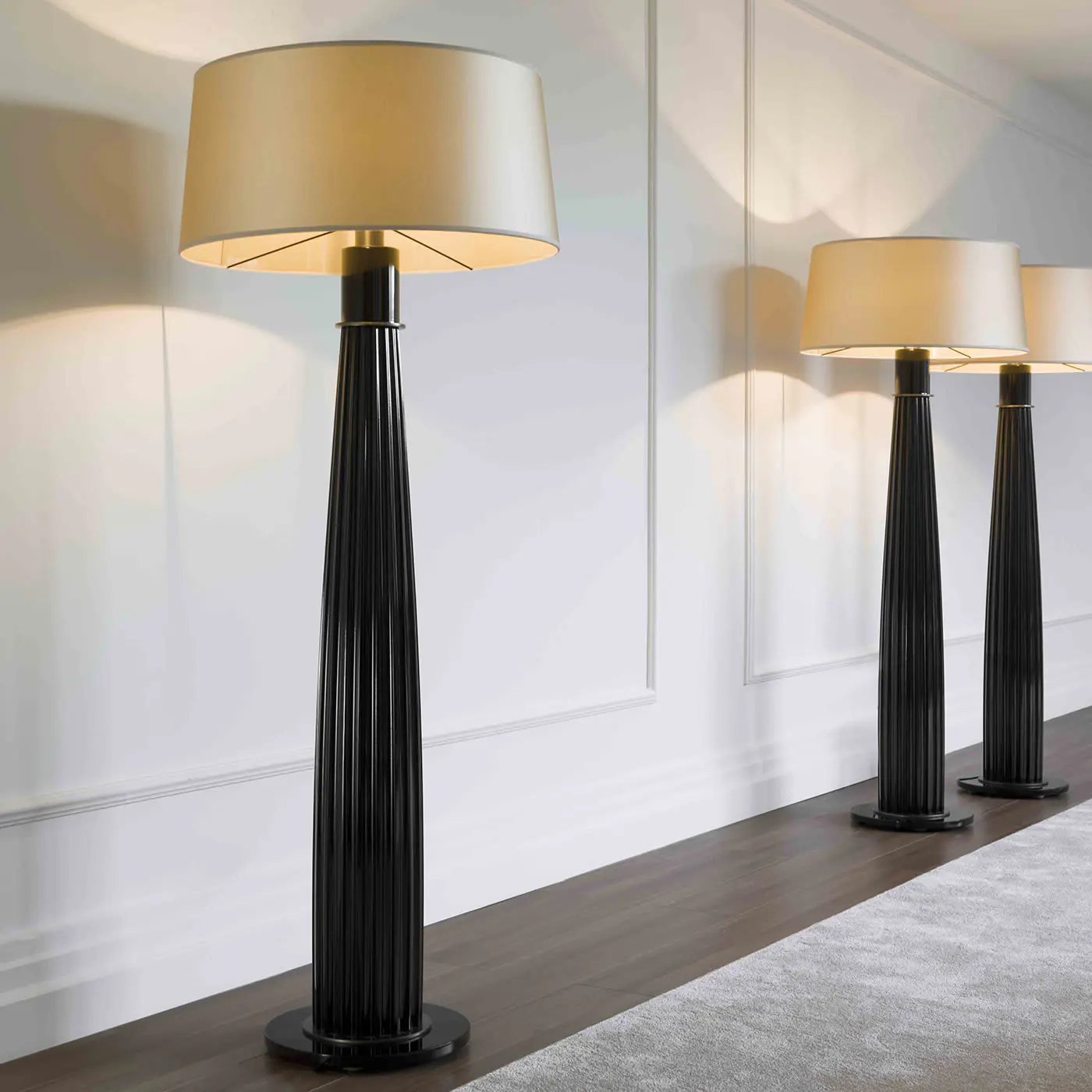When it comes to brightening up your home, choosing between wall lamps and floor lamps can significantly influence both functionality and style. Each type of lamp comes with its own set of pros and cons, and understanding these differences can help you create the ideal ambiance in your space. This detailed guide aims to help you decide which lamp best fulfills your lighting needs.

Essential Insights
Wall Lamps
Also known as wall sconces, these fixtures are mounted directly onto the wall and can serve multiple purposes, from ambient lighting to task illumination or decorative accents.
Advantages:
- Space-Saving: Wall lamps are perfect for rooms with limited floor space, allowing you to maximize your area.
- Flexible Placement: They can be installed at various heights and locations, making them excellent for highlighting artwork, providing bedside light, or improving visibility in corridors.
- Variety of Styles: Available in numerous designs, finishes, and sizes, wall lamps can either blend seamlessly with your decor or stand out as eye-catching features.
Disadvantages:
- Installation Needed: Wall lamps require mounting, which may necessitate precise measuring, drilling, and possibly hiring a professional.
- Limited Mobility: After installation, they are usually stationary, limiting your ability to rearrange your space easily.
Floor Lamps
These versatile, freestanding lamps can be easily relocated, providing both light and decorative charm.
Advantages:
- Adaptability: Floor lamps can be moved to different spots as needed, allowing for quick adjustments to your lighting for various occasions or seasons.
- Statement Pieces: With their height and design, they can serve as dramatic focal points that elevate the room's decor.
- Multipurpose Use: Many floor lamps are designed for dual functions, offering both focused reading light and ambient illumination for larger areas.
Disadvantages:
- Space Consumption: Floor lamps can occupy valuable floor area, which may be a concern in smaller rooms.
- Diffuse Lighting: Some floor lamps, especially those with broad shades, may not provide intense light for specific tasks.
Assessing Your Room
To make the right choice between wall and floor lamps, consider the following:
Room Size:
- Small Spaces: Wall lamps can enhance functionality without adding clutter, making them ideal for compact areas like bathrooms or small bedrooms.
- Larger Rooms: Floor lamps can fill empty corners and add height, providing ample light without overwhelming the space.
Functionality:
- Reading Areas: If you have a reading nook, a floor lamp with an adjustable head may provide better focused light.
- Spotlighting Features: Wall lamps are excellent for accentuating art pieces, photographs, furniture or unique architectural elements.
Design Style:
- Modern Interiors: Sleek wall lamps may complement contemporary aesthetics, while oversized floor lamps can add character to eclectic spaces.
- Traditional Decor: Vintage-style wall sconces can enhance a classic feel, and ornate floor lamps can serve as elegant centerpieces.
Lighting Needs
Your specific lighting requirements will also play a role in your decision:
- Ambient Lighting: For a warm, inviting ambiance, consider wall lamps that offer diffused light, or use multiple floor lamps for an even glow.
- Task Lighting: For focused activities like reading, adjustable floor lamps near seating areas or wall-mounted fixtures beside a bed or chair offer convenient illumination.
Achieving Aesthetic Cohesion
Regardless of your choice, it’s vital to maintain visual harmony:
- Color and Finish: Choose lamps that complement your existing decor. For instance, matte black fixtures can elevate a modern setting, while brass accents may suggest a vintage charm.
- Shade Coordination: Ensure that the lampshades match other furnishings in terms of fabric texture, wall colors, and other lighting elements.
Practical Considerations
- Wiring and Power Supply: Wall lamps typically require electrical installation, whereas floor lamps just need an available outlet. If you prefer simplicity, floor lamps might be the way to go.
- Safety: Check that floor lamps are sturdy and adequately weighted, particularly if you have children or pets at home.
Conclusion
Ultimately, the choice between wall lamps and floor lamps depends on your specific space, design preferences, and lighting needs. Each type of lamp offers unique benefits that can enhance the atmosphere of your home. By considering the factors discussed, you can find the lighting solution that aligns perfectly with your lifestyle and personal taste, ensuring your home remains both inviting and beautifully lit.